Mohican Through the Seasons is a four-part album series highlighting the natural soundscape of Mohican State Park in north-central Ohio and its vast surrounding forest during winter, spring, summer and fall.
Seeing the seasons change in Mohican is like watching the great big wheel of nature go around. Listen to them on the other hand, and you can hear the wheel come alive. Just when it seems like it’s grinding to a standstill during the biting-cold winter months, it begins to spin again for all to hear come springtime, if we stop to listen.
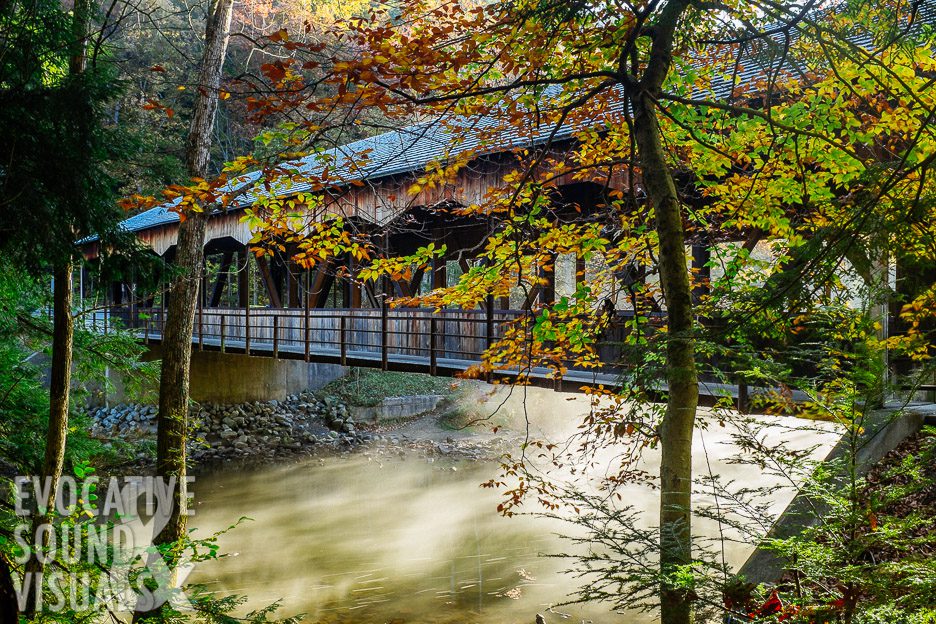
Mohican is a 1,110-acre state park bordered by a 4,525-acre state forest. For me, it’s a haven of relative natural quiet in an otherwise noisy landscape. There are other parks in Ohio with more remarkable natural features. Cuyahoga Valley National Park’s Brandywine Falls comes to mind, but a major interstate flows less than 400 feet away. Hocking Hills, located in the southeastern part of the state, is outstanding as well. Over four million visitors thought so too in 2017, according to their tourism association. It’s getting a bit crowded. Mohican doesn’t have quite the foot traffic.
Mohican shows the wrinkles and scars of three extremely different ages of geological time. First comes the Mississippian, when Ohio was part of a vast sea. Second, the Pleistocene, when much of Ohio was crushed under the weight of massive ice sheets. And lastly, eroding into the Holocene where we are today.
To get to the bottom of its 300-foot gorge, hikers and drivers alike must navigate down a series of switchbacks. The reward for making it to the bottom is a picturesque half-century-old dark wooden covered bridge spanning the Clear Fork River. After coming out of Hog Hollow and reaching the top, one can gaze out over the 1,000-foot-wide Clear Fork Gorge. A fall view from the Gorge Overlook rivals any New England picture postcard.
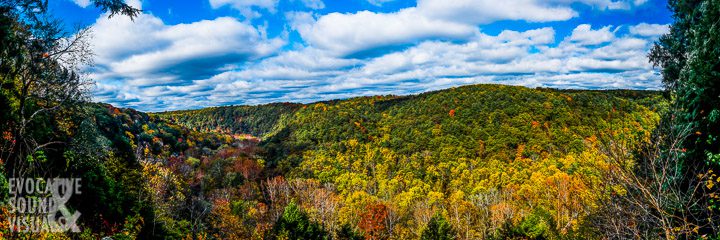
I learned in 8th-grade Ohio history class that when the white man first laid eyes upon this land, a squirrel could jump from tree to tree – from the Ohio River in the east to the Indiana line in the west – and never touch the ground. The days of border-to-border forests, and Johnny Appleseed tending his apple trees at the edge of the wild frontier, are unfortunately long gone. Yet, if I ever doubted my history teacher, my first trip to Mohican made me reconsider.
Over the years, I’ve become familiar with the park’s many trails and can picture in my mind the distinctive landmarks along its paths. Like the hearty tree in the middle of a well-worn trail that against the odds grows up over a boulder, its roots clawing into the ground. I’ve walked Mohican’s trails to its most famous waterfall, Big Lyons Falls, countless times. I’ve trudged through thick blankets of snow so deep officials closed the road above me. I’ve waded through nasty spring mud puddles and crunched through colorful fall leaves.
Mohican contains one of the few old-growth forests in the eastern half of the U.S. These trees remain only because they grew in a steep gorge, out of reach of the farmer’s plow. Trees are everywhere now it seems in Mohican, but it wasn’t always so. Workers with FDR’s Civilian Conservation Corps replanted millions of oak, hickory, dogwood, beech, red maple, ash, cherry, pine and walnut in the area during the 1930s. This revitalized worn-out farmland and provides the verdant view we see today.
Winter
On a cold January evening, I found myself out on a frozen Pleasant Hill Lake as pellets of wind-blown ice raced across, scraping the snow-covered surface and stinging my numb, red nose.
One windy February afternoon, I climbed the forest’s ice-covered 86-year-old fire tower. There I sat, motionless, in down-insulated pants, wool coat and vintage furry military mittens, for over an hour in below-freezing temperatures. All to record the hidden sounds of this 80-foot tall steel structure using special contact microphones.
I hiked to Big Lyons Falls one January 20-degree day under overcast skies. An giant icicle shaped in the form of an hourglass stretched from the top of the falls down to the ground. Winter’s blanket of snow quiets the park. Hiking out I was treated to the sound of deer communicating with their hooves on the other side of the river.
Winter Track Notes
Duration 19:31
- Hiking the Hemlock Gorge Trail (bonus 03:00) – It is all of seven degrees as you begin your journey from the campgrounds. Grudgingly, you walk past the commissary, where the inviting smell of hot vegetable soup, coffee, cocoa, and a crackling fire mix into one as it wafts past your already frozen nose. Walking stick in hand, you press on, trudging through a blanket of crunchy, fresh snow. You are seemingly alone and hiking the Hemlock Gorge Trail, which hugs the Clear Fork River on your right. Recording note: This is a quasi-binaural recording, made by having two small omnidirectional microphones close to my ears. I took deliberate steps – and sometimes missteps – along the frozen trail.
- Stinging Ice Across a Frozen Lake (06:52)- Hear 850 acres of ice shift, snap, and dribble and gurgle as tiny ice crystals, snatched up by a bitterly cold wind, scrape across a frozen Pleasant Hill Lake on January 19, 2018. Daytime temperatures rose to a balmy 35 degrees. Blustery wind gusts of 21 mph made for less-than-ideal recording conditions. Recording note: A pair of spaced hydrophones were used to capture the uncanny sounds.
- Atop the Fire Tower (bonus 04:28) – It is a below-freezing, overcast windy February afternoon. Weighted down by winter boots, down underwear, a wool coat, and thick furry mittens, you climb to the top of the forest’s 85-year-old fire tower. You sit motionless and alone for over an hour. After a while, it dawns upon you that no one else is crazy enough to come out on a day like this. Scanning the forest below, you begin to hear the low, groaning sounds of the 80-foot-tall steel structure. Recording note: Contact microphones were used to capture this recording.
- Inside a Hollow Tree, Listening to a Woodpecker’s Drum (bonus, 01:22) – After a long hike along the snow-covered trail, you decide to sit down inside a hollow tree. After all, no one is watching. All of a sudden you are greeted with the sound of a Hairy woodpecker drumming on a tree nearby. Recording note: A quasi-binaural microphone was used for this recording. It will sound best while wearing headphones.
- Under Big Lyons Falls (bonus, 03:49) – Stand in the sandstone bowl that through time has formed around the 80-foot-tall Big Lyons Falls. It’s just you and a solitary woodpecker searching for its bug meal. Hear the sound of a giant icicle forming on an overcast 20-degree day. Listen carefully for the faint sound of a passing train toward the end.
Spring
One early March afternoon, with temperatures hovering just below freezing, I became entranced by the sound of a loud, constant mournful wind whipping and whistling through the lake’s circular Morning Glory spillway. Completed in 1936, the 76-foot diameter spillway, featuring a 19-foot diameter drain, has never taken in a drop of water, at least from the lake. The reservoir would need to reach a height of 1,065 feet. The highest it’s ever been is 1,044 feet, a record set in 1959, according to Chuck Minsker, a public affairs specialist with the U.S. Army Corps of Engineers, the agency that built the dam.
Leaving this ancient alien spacecraft docking port, I walked down an endless amount of steps to listen to a torrent of water shooting out of the dam’s discharge orifice at 1,300 cubic feet per second (cfs). The week before saw 1,500 cfs. That’s a lot of flow, and typically happens once every three to five years during high water events, added Minsker.
I retreated into the woods after hearing that rush of wind and delighted in the sound of melting snow dripping off ice-covered branches all around. Each nourishing drop makes a definitive plop as it hits the bed of brown rotting leaves I lay upon. I imagined the trees, joyful now that the weight of a cold winter was slowly lifting off their branches.
On Mother’s Day, I planted myself a few yards downstream from the covered bridge, next to a babbling rapid along the Clear Fork River. I watched mink dart past on the far bank and delighted in the sound of a dawn chorus of birdsong.
Spring Track Notes
Duration 01:02:09
- A Mighty Wind at Morning Glory Spillway and Torrent of Water at Dam Discharge (04:05) – It is a cold spring morning as you pull up to the Pleasant Hill Dam at Mohican. A loud and mournful sound hits you as soon as you open the car door. The sound of the wind, whipping through and past the concrete Morning Glory Spillway structure. An alien-looking thing if there ever was one. To get away from it, you walk down an endless amount of steps, down to where a torrent of water rushes out of the dam’s discharge oracle at 1,300 cubic feet per second.
- Spring’s Dawn Chorus (03:00 excerpt mix) – Spring has arrived at Mohican. Mother Nature’s white blanket is all but melted. Birds are flittering from tree to blooming tree. And you are there, walking worn dirt trails that hug the Clear Fork River. Every so often, you pause at a well-placed bench to take it all in.
- Spring’s Dawn Chorus (bonus 58:04 full recording)
Summer
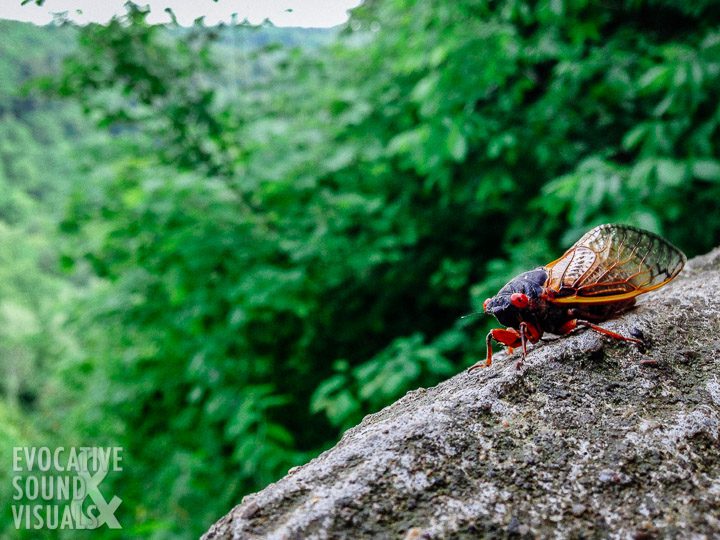
One summer day, I soaked up the sound of a distant thunderstorm, fell into the hypnotic rhythm of cicadas and was fortunate to hear a woodpecker drum directly overhead. The sounds of beak to bark reverberated all around as I hunkered down on the fern-covered slope of the gorge.
Summer Track Notes
Duration 26:09
- Mohican Through the Seasons, Summer (02:44 excerpt mix) – It’s summer in Mohican. The trees are verdant. The bugs are out. The tourists are in full bloom. But you manage to find places all to yourself, like sitting beneath an old-growth forest listening to wild turkeys and the drumming of a woodpecker. Come down to the river’s edge for a moment. But watch out, a rolling thunderstorm is on its way.
- Mohican Through the Seasons, Summer (bonus 26:09 full recording)
Fall
One chilly October morning, I stumbled upon the unexpected sound of acorns crashing onto the metal roof of the covered bridge and falling to the riverbank. I was lucky to capture it. From the Gorge Overlook one September evening, through the constant chatter of crickets and bending branches, I heard the distant sound of a freight train announcing itself at several crossings. Then came the sound of a high school band’s drumline – members of the Loudonville Redbirds or visiting Triway Titans – during a Friday night football game three miles away.
Listening to these soundscapes confirms what I realized the first time I set eyes on the Mohican. It is a treasure, far enough from the hustle and bustle of Cleveland and Columbus to be in near-perfect tune with Mother Nature, 365 days a year.
Fall Track Notes
Duration 31:17
- Mohican Through the Seasons, Fall (01:36 excerpt mix) – Summer barbecues have come to an end. Flannel shirts are back to the front of the closet. Your friends are driving to Columbus to see the football game and you are back at Mohican. It’s fall! The most colorful time of year. And the season Mohican was made for. Stand at the bottom of Hog Hollow and listen to a stream ripple past as it enters the Clear Fork River. Hear acorn after acorn fall from their trees and pummel the metal roof of the park’s iconic covered bridge. Sit at the edge of the Gorge Overlook at nightfall. Hear millions of insects chatter, trees, swaying in the evening breeze, rubbing back and forth. Distant freight trains rumble as they blow their horns off in the distance. And amazingly, you hear the sound of a football game in progress several miles away.
- Acorns Pummel Covered Bridge (09:35 bonus)
- Down in Hog Hollow (04:36 bonus)
- Evening at Gorge Overlook (17:06 bonus)
Further Reading
- Want to look inside the dam? This page, maintained by the Mohican Trails Club, has a fantastic chronological collection of images of its construction.
- See a topographic trail map of Mohican here, along with a nice trail map here.
- See the Ohio Division of Natural Resources park page here.
- Read about the history of the water tower here, from the Richland Source.
- The Hungry Horse Dam in Montana also utilizes a spillway. View the National Park Services page here.
- This page via Pleasant Hill Park, shows, albeit small, a really interesting photograph of the village of Newville, which was buried underwater because of the reservoir.
Behind the Scenes
Recording note: All recordings were captured in hi-quality stereo at 96kHz/24 bit, then converted into CD-quality 44kHz/16 bit .wav files. For your best reproduction experience, use first-rate headphones or hi-fi systems, if available. Bonus Tracks Available Upon Purchase


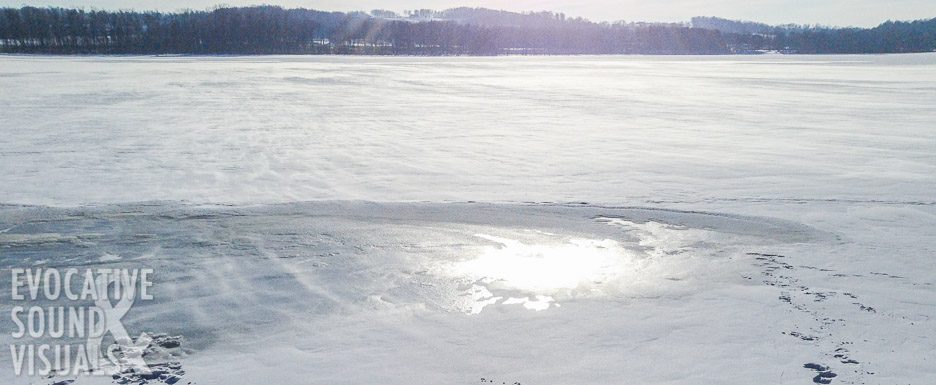
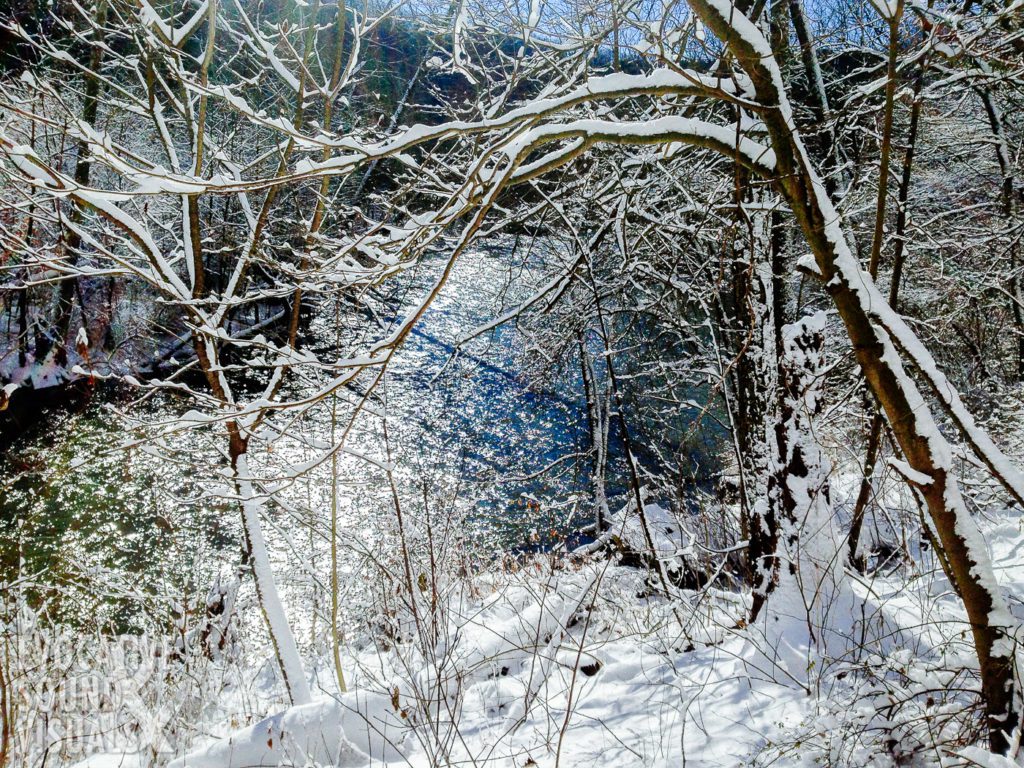
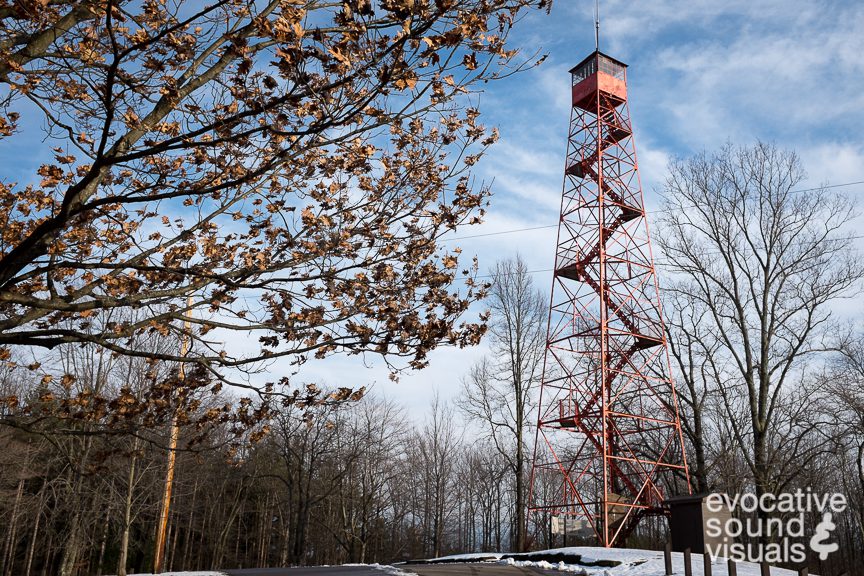

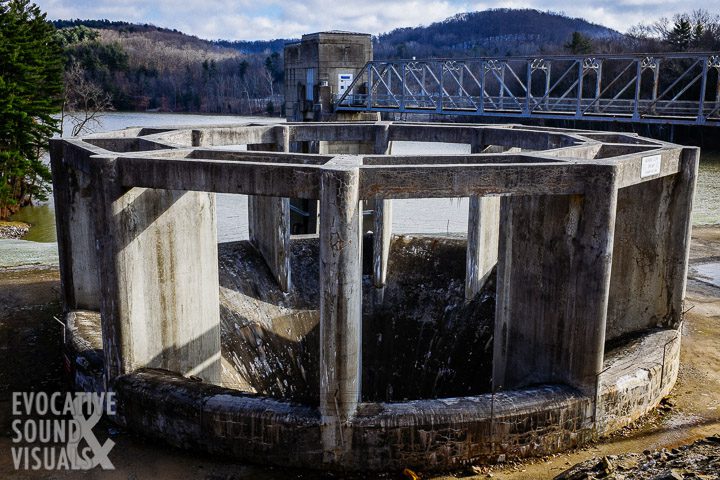
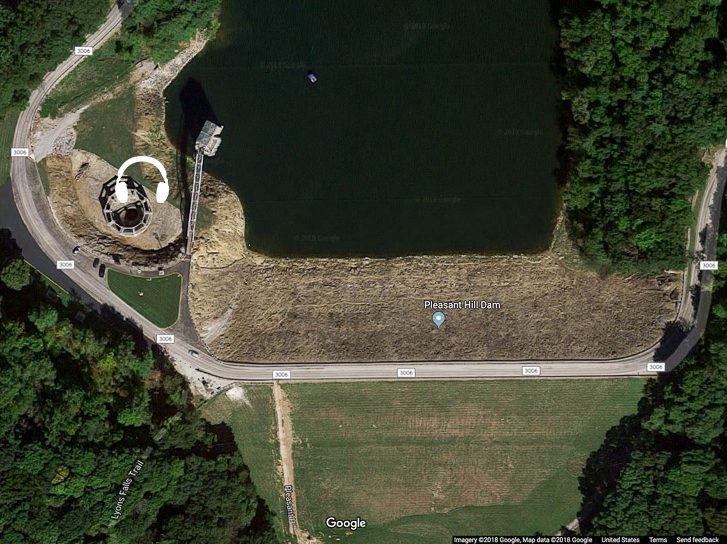
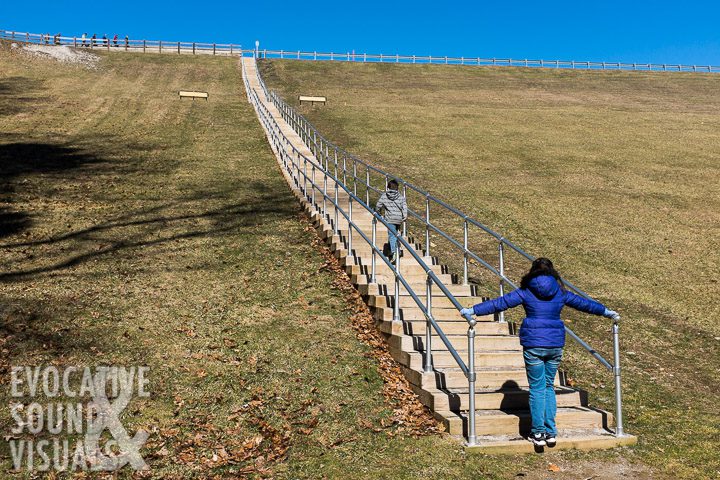
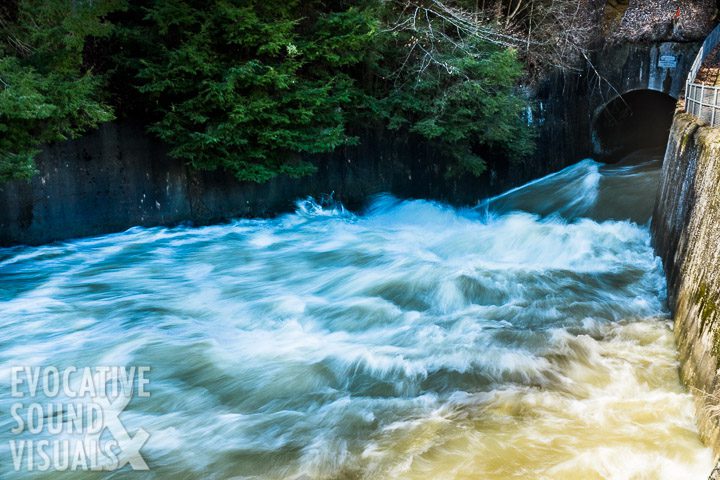
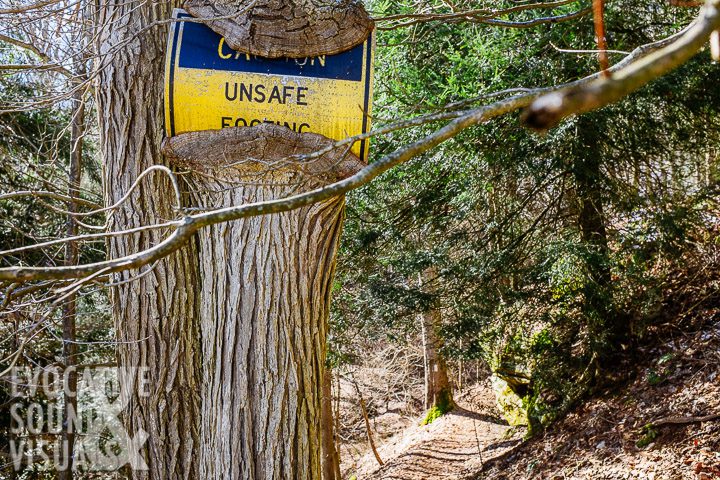
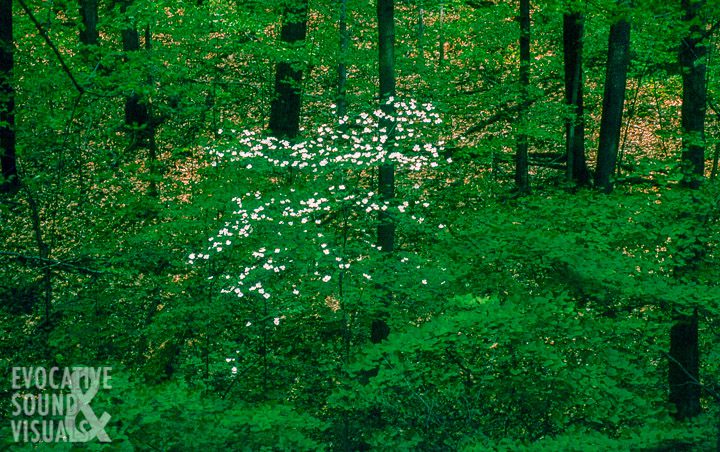
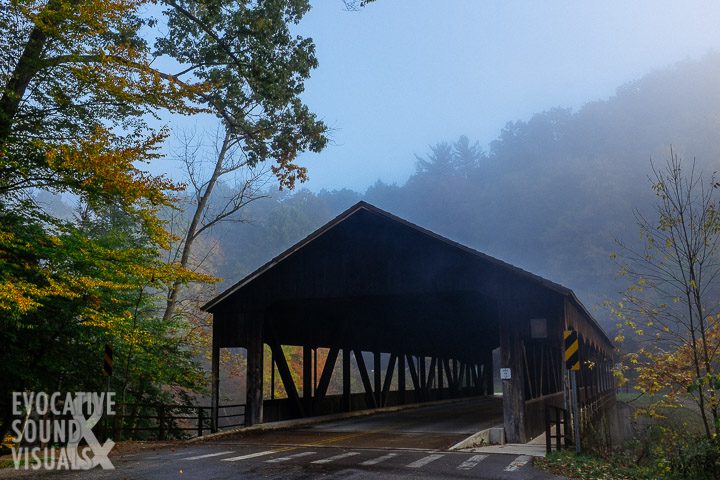
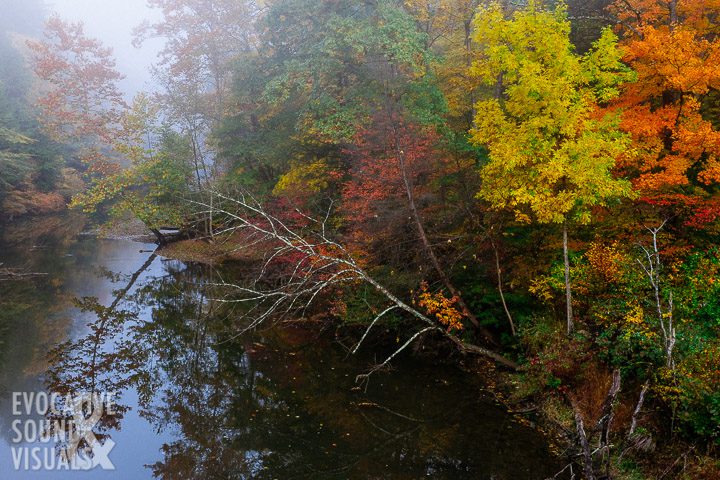
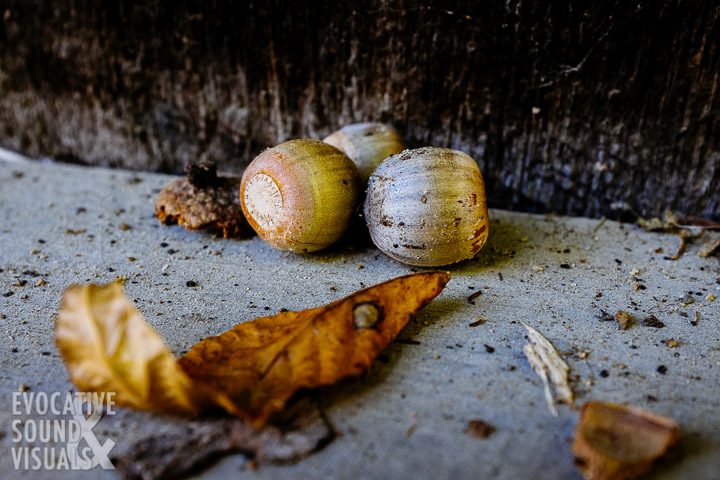
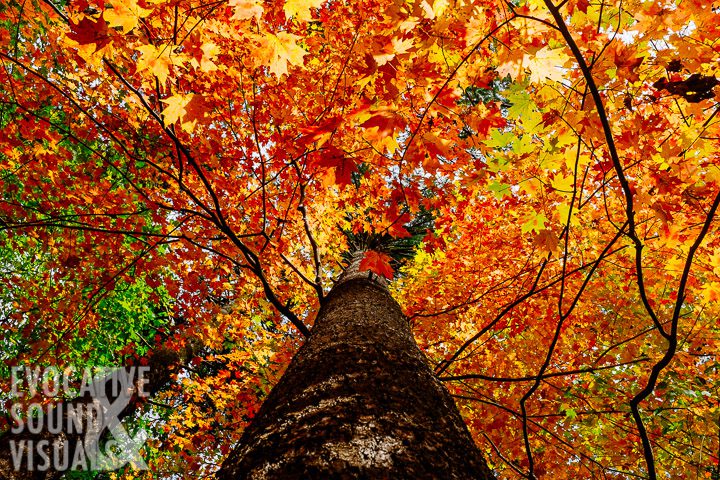
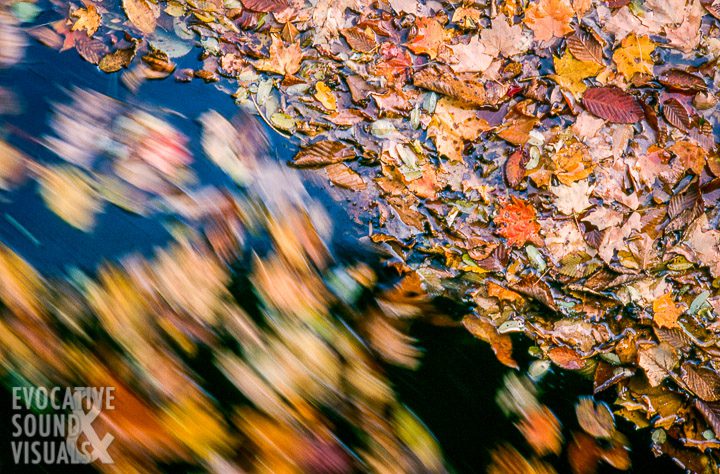
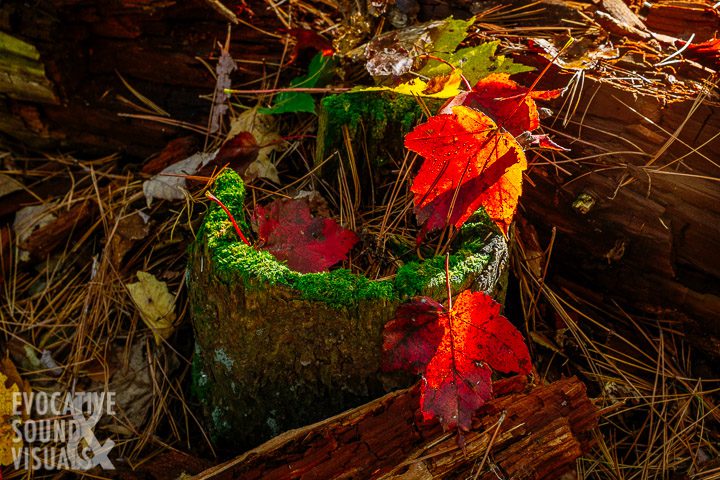
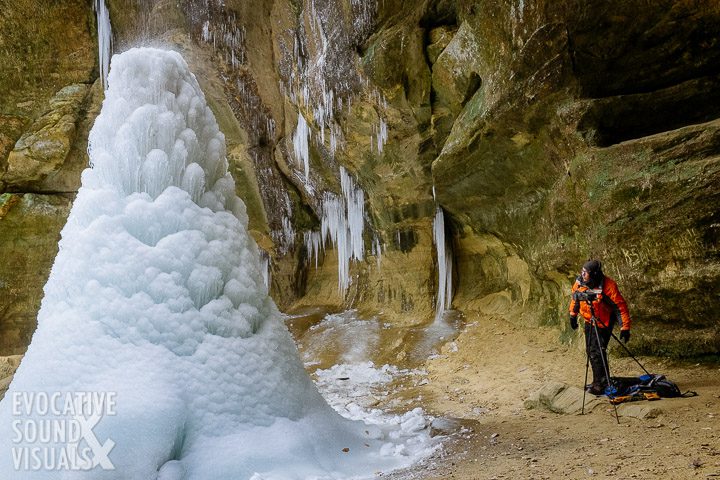
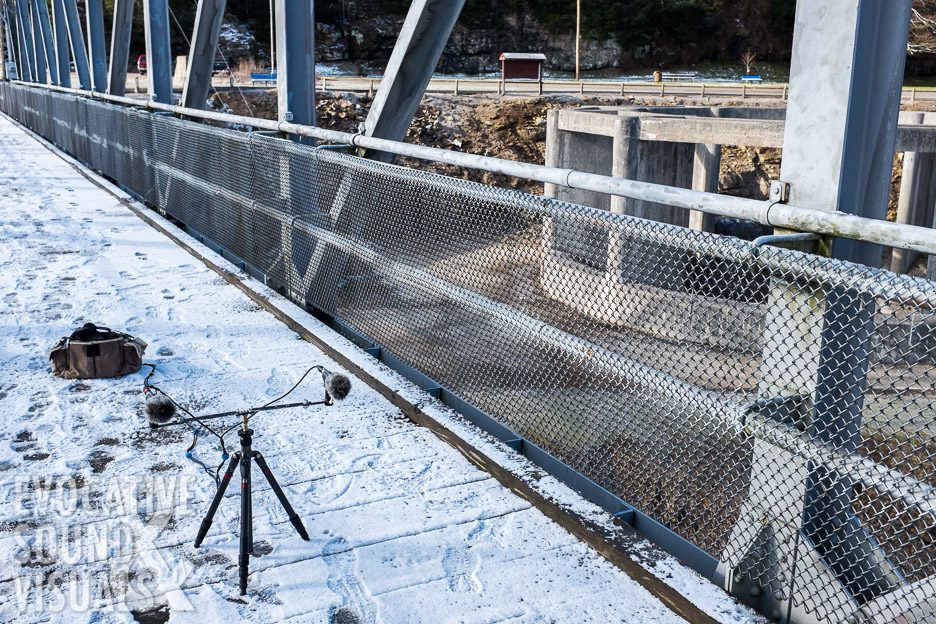
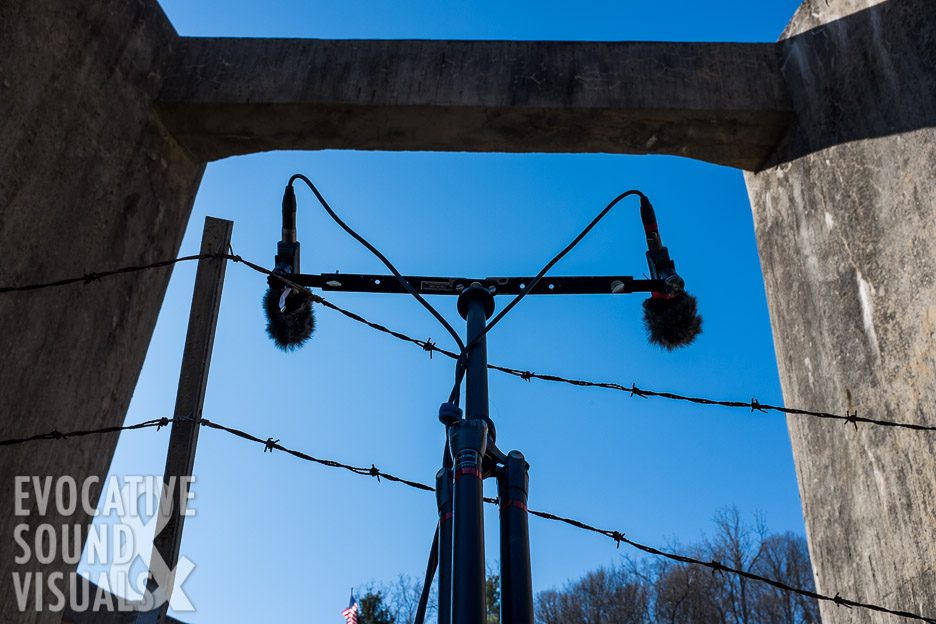
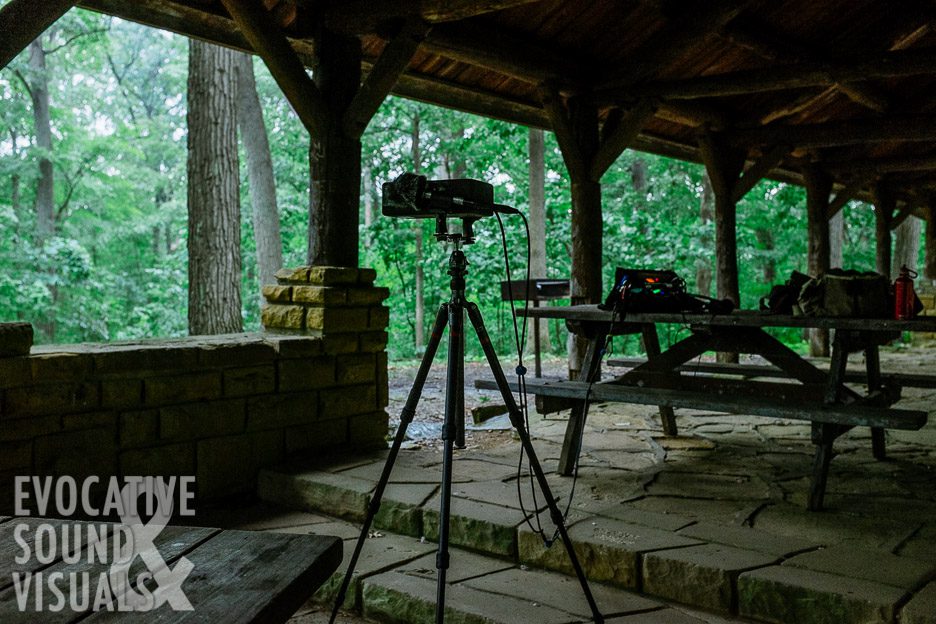
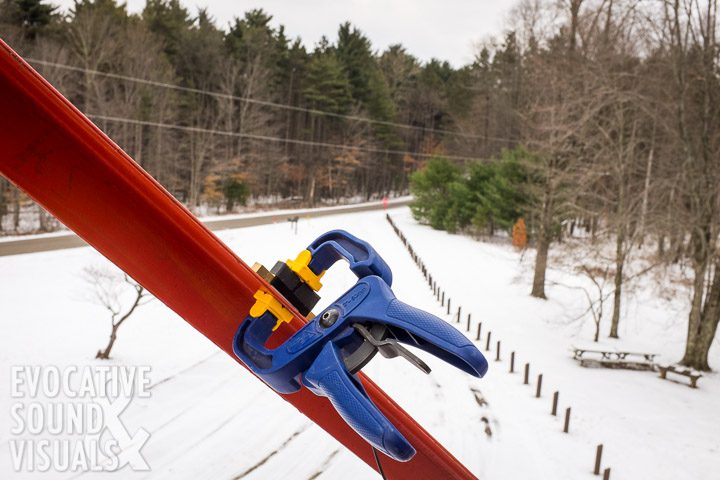
2 Responses
Jeff Charette
Rick, impressive and incredible! I feel humble and and honored to say I know you. What work of the heart and great love of what we have been given here in Mohican Country. I hope this reaches so many people that can’t get here to appreciate what you so beautifully chronicled! Fantastic work my friend, a true talent from the old hood! Good luck, I hope it gets a great big audience.
rick@evocativesound.com
Jeff, Thanks so much for your touchingly kind words. This means so much!